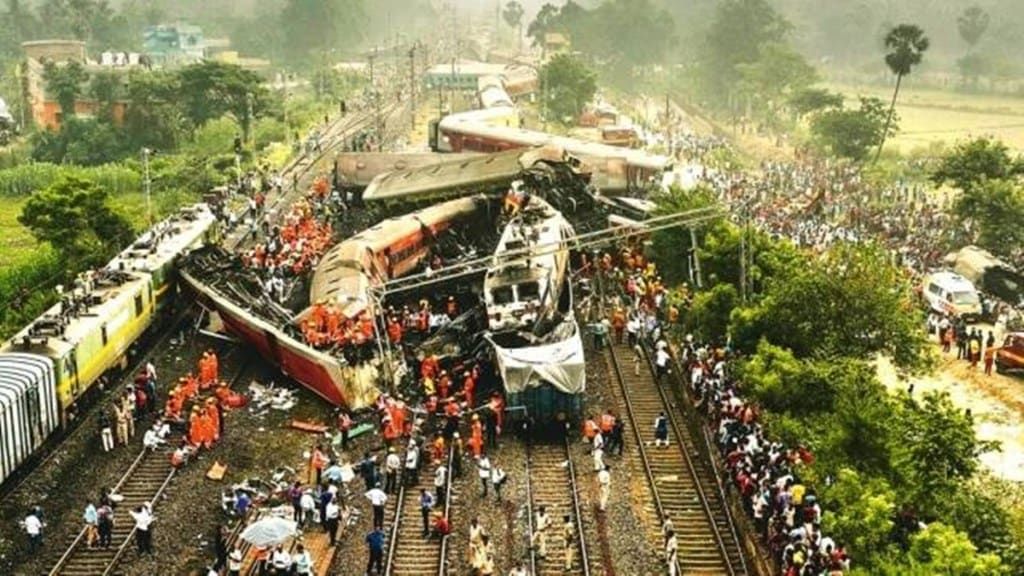Railways minister Ashwini Vaishnaw said that a change in the electronic interlocking and the setting of the point machine caused the accident involving the Shalimar Chennai Central Coromandel Express, in which 275 people died. Sarthak Ray takes a look at what interlocking is and how it can malfunction.
What is interlocking?
Interlocking is an arrangement of signals, points—a junction of two railway tracks that can be set in such a manner that a train can be guided from one track to the other—and other elements such as track circuits that is inter-connected in such a manner that the operation’s all elements takes place in the right sequence to ensure safety. It is a key element of railway signalling, which is based on colour light signals and train detection with the help of track circuits/axle counters. A signal (red, yellow, and green lights) is used to indicate whether a train is free to move along a track or must stop.
Also read: Balasore train tragedy exposes crying need for railway safety upgrade
Electronic interlocking is a microprocessor-based (software-run) interlocking system used for controlling points, signals, etc, through visual display units/panels.
What is locking of points?
The points are rails at the junction of two tracks that can be moved so as to direct the wheels of a train on to either of the two tracks. The point is “locked” in such a manner that the train wheels are guided in the direction that the train is supposed to be headed—the point remains locked in that position till the time all coaches/wagons have fully crossed the point.
This system is controlled electronically. As per the Handbook on Installation and Maintenance of Electric Point Machines (EPMs), an EPM is a vital device for railway signalling for quick operation and locking of point switches and plays an important role in safe running of trains. Failure of these machines affects the train movement severely, and deficiencies at the time of installation can result into unsafe conditions.
Movement along a track
The length of a track is divided into blocks, and entry is only allowed when a block is free. The interlocking system must “know” that a train has entered or left a block. The entire length of the track is fitted with track circuits or axle counters. Axle counters are sensors that count the number of axles that have passed over them, to determine if the entire length of a train has passed. Only when the full length has passed a point switch, “locking” may be reset.
The interlocking system is based on the “logic” of safe train operation. As The Indian Express points out, the logic followed by the system is that if the Up line—Up means the line towards a train’s home railways/division(the Coromandel was on its Up line)—is vacant and the point is locked in the direction of the Up line, the train would have received a green signal. It is somewhere in this logic flow that the “change” the railway minister spoke of seems to have occurred.
Safety and malfunction
Safety depends on all points being in the ‘logical’ flow in the interlocking system—that is, the axle counter functioning to accurately determine if a train has passed, the point subsequently being locked and in the right direction, and the signal conveying to the train that it is safe to pass.
Also read: Isn’t non-compliance of CAG’s 2022 report enough reason for railways minister to resign, asks NCP
If there is a malfunction at any of the links—with their attendant process-flows—the signal should flash a red light. And the oncoming train should stop.
This system is described as “fail-safe” or tending almost entirely towards an erroneous ‘stop’ sign than an erroneous ‘go’ sign.
This is generally held to mean a failure of the fail safe system—an erroneous green sign—would result from factors external to the system.
The persons in control are trained Railways employees in the signalling and telecommunications department.
Railway Board member (Operations and Business Development) Jaya Varma Sinha had said on Sunday that even when a system is running smoothly almost all the time (Sinha used “99.9% of the time” figuratively), the minuscule fraction of malfunction—0.1% possibility—can still occur.


